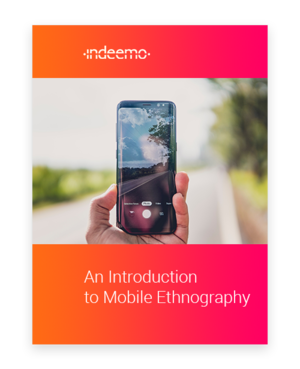Mobile Ethnography White Paper
Learn how Mobile Ethnography can supplement your research projects and generate richer contextual insights for your brands.

The gaming industry has been rapidly growing over the years and has become a multi-billion dollar industry. According to Newzoo's 2021 Global Games Market Report, the global gaming market is expected to generate $175.8 billion in revenue in 2021, representing a year-over-year growth of 1.1%.
The report also notes that mobile gaming is the largest segment, generating $90.7 billion in revenue in 2021, followed by console gaming with $54.6 billion, and PC gaming with $30.7 billion. The remaining revenue comes from other sources such as virtual reality gaming and gaming-related hardware.
It's worth noting that the revenue generated by the gaming industry has been steadily increasing over the years, and this trend is expected to continue in the coming years.
China is one of the largest gaming markets in the world and is an important contributor to the global gaming industry. The mobile gaming segment is the largest and fastest-growing segment in China's gaming market, with revenue expected to reach $27.5 billion in 2021. (Source: Newzoo's 2021 Global Games Market Report)

When our client approached us, they were eager to delve into the lives of gamers in China to understand their experiences with different platforms and games.
Today, gamers are no longer static in front of TV or computer screens in their homes, but playing on the go everywhere they go from morning to night. This has resulted in a shift in demographics, with gaming now accessible to everyone from kids to retirees.
However, understanding the gaming behaviour of an on-the-go audience can be challenging. With gamers playing in countless different contexts, it's crucial to gain a comprehensive understanding of the full user experience.
Given the highly immersive nature of gaming, a non-invasive, mobile-based research solution was required to meet our client's objectives.
Understand the motivations, behaviours and attitudes of Chinese gamers of multiple different genres
Gain an insight into where, when and how gamers used their mobiles to play games
Discover how different environments and contexts influence what games players chose to play over the course of a week
5 Respondents
13 Tasks
1 Week
Tasking Strategy: Scheduled Tasking
With mobile gaming becoming ubiquitous in everyday life, from the home to the workplace and everywhere in between, digital ethnography is a highly effective means of gaining a deeper understanding of the gamer experience.
Our client recognised this and embarked on a comprehensive week-long study of gamer behaviour, with a task list designed to cover every aspect of the journey. This included intro selfie-videos from each respondent, tracking of how they spent their time, identifying any life events that affected their gameplay, and an exploration of the games they played and why.
To add even more depth to the study, our client leveraged our mobile screen-recording capability to task respondents with taking quick snapshots of their gameplay while providing accompanying voiceovers to explain their actions and emotions. These recordings were augmented by photos of the gaming context, giving visual insight into the where and when of the gaming experience.


To gain a more personal and individualised understanding of gamer behaviour, the study required respondents to identify what type of gamer they saw themselves as. This served as a window into how respondents identified with the games they played, and helped to connect the gaming experience to the individual.
Over the course of the week-long study, gamers uploaded videos, screen recordings, and photos, providing detailed coverage of their gaming experiences. The data gathered allowed our client to gain valuable insights into gamer behaviour, including the most popular games and how gamers engaged with them.
In conclusion, digital ethnography is a powerful tool for gaining a deeper understanding of gamer behaviour. By leveraging mobile technology, researchers can track and analyse gamer behaviour in a comprehensive and personalised way, leading to valuable insights for game developers and marketers alike.
If you’re looking to learn more about how Indeemo can help understand mobile gamers, please get in touch.
Indeemo is used by Experience Designers and User Researchers for diary studies and observational research ranging from understanding how people shop online to recording how business people book taxis at an airport to understanding out of the box experiences to observing how consumers shop for snacks at convenience stores.
Our Research and Design clients consistently remark on the richness and depth of insights that they can capture using Digital Ethnography.
The ability to seamlessly analyse contextual video from multiple respondents on a single dashboard can significantly improve the efficiency at which researchers can analyse and synthesise this behavioural data.



Learn how Mobile Ethnography can supplement your research projects and generate richer contextual insights for your brands.
